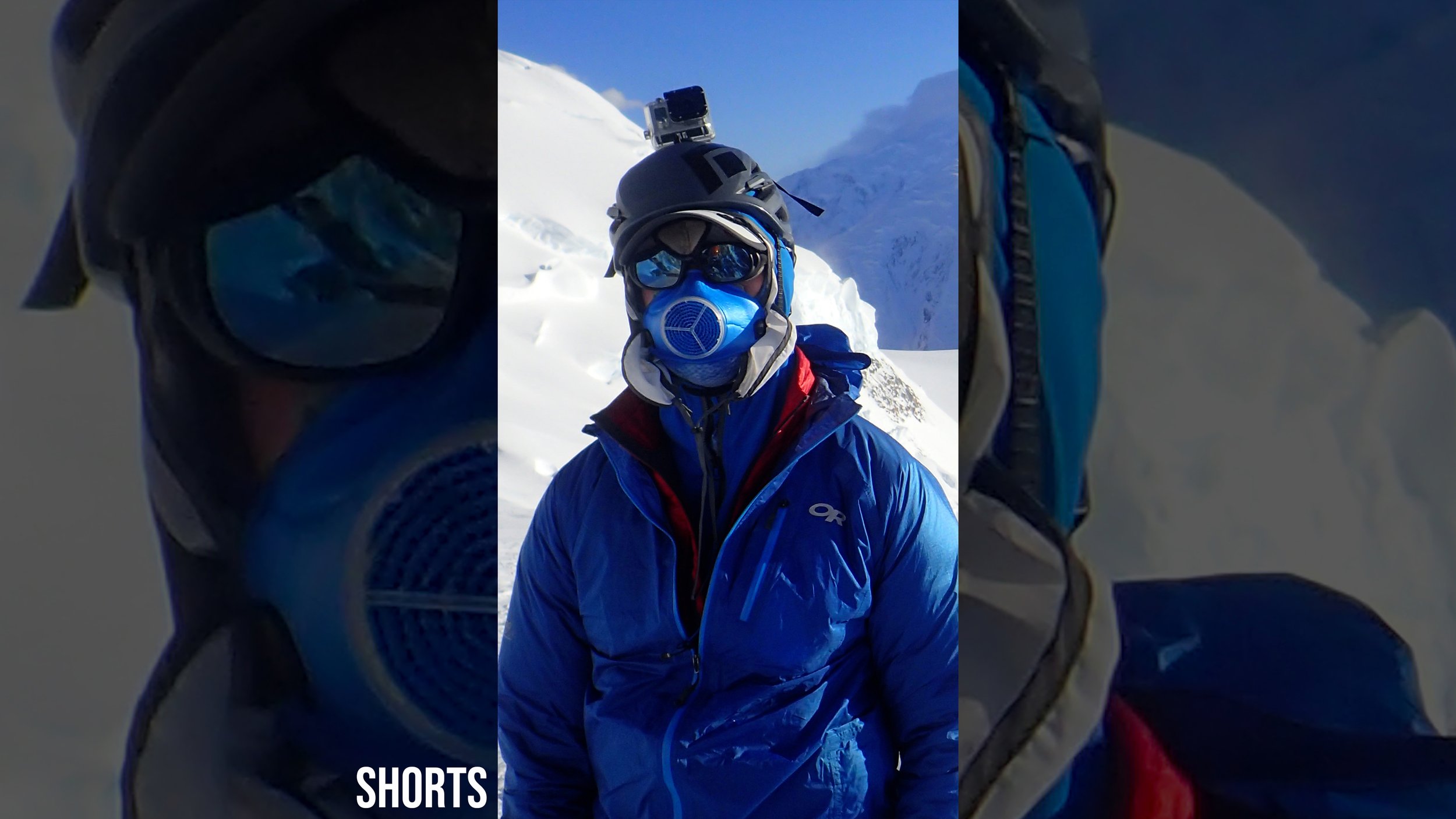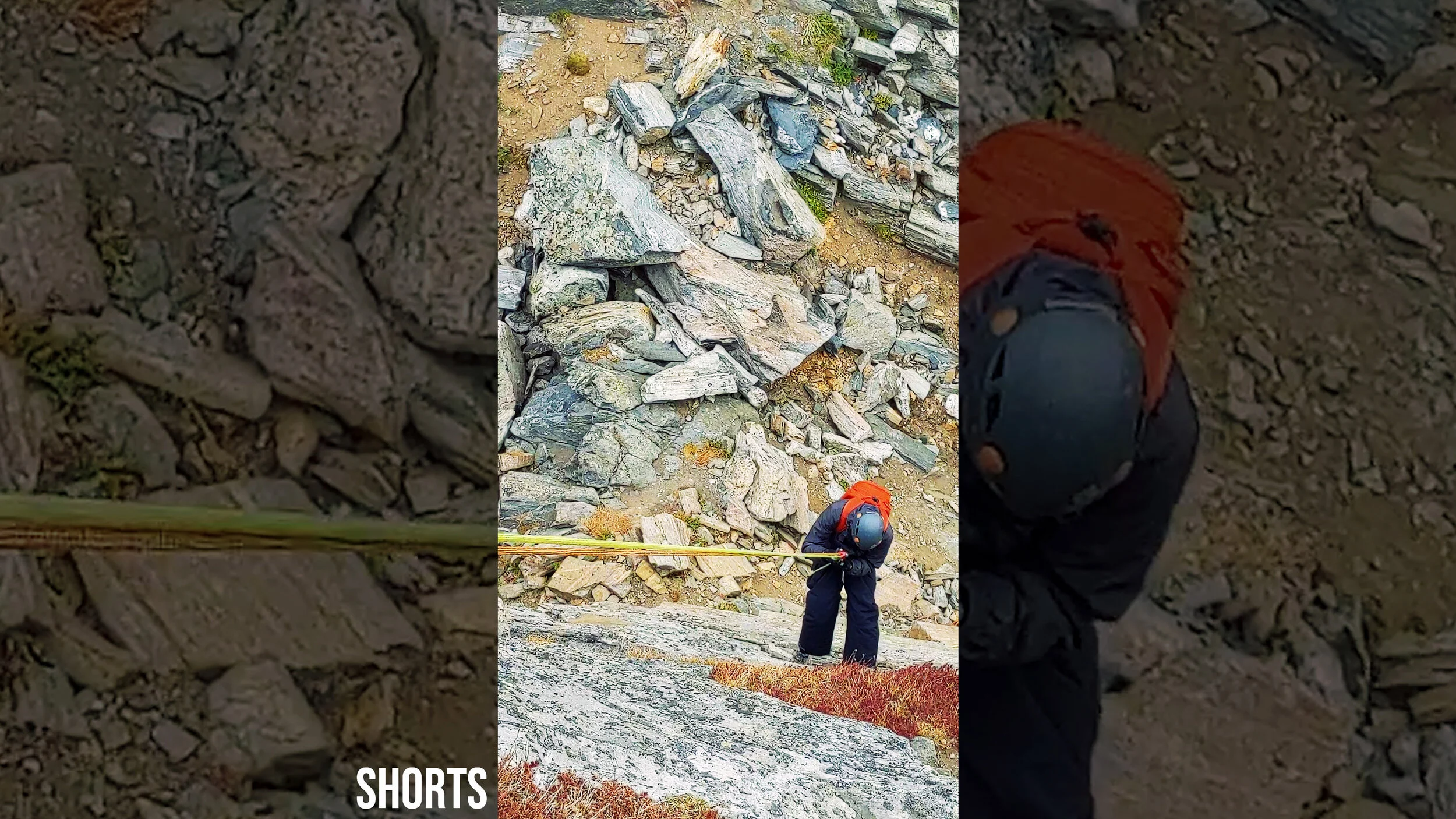Short clips
Trailers to full length videos and stand-alone quick tips; everything we make that is under 60 seconds
Alpine Climbing Isn't Crag Climbing: Racking Your Gear with Gloves
Often times rock climbers wrap their runners and cords very tightly to keep them out of their way when racking them on their harness. But if you get into alpine climbing or mountaineering in the cold environments, that kind of thing can be difficult to tie and untie with gloves. Here's how I find the balance between racking in a glove friendly way but which could be too loose and a trip hazard versus racking very tightly but in a way that is difficult to manage while gloves are on.
Trailer to Stopping Cold Hands in Winter: Lessons from Years of Mountaineering Instruction
After teaching high altitude climbing to lots and lots of different people, the full video gives the four most common (behavioral) reasons I see people get cold hands in the mountains along with what to do about it.
Simplest Thing to Keep Your Sleeping Bag in Good Condition
Sleeping bags can be expensive, and we should take care of that investment. The simplest thing you can do to help keep your sleeping bag lofting and in excellent shape is to not store it in a compression sack when you aren't using it out in the field. Hanging in it our using its non-compression storage bag are better options, if you have the space.
Trailer to Cold! Keeping Morale Up When Winter Backpacking, Climbing, and Camping
In the full length version of this fifth and final video of the Cold! Series, we talk about keeping morale up. How do we keep our team - whether that team be our climbing partners, our life partners, or our kids - in a frame of mind to be proactive and to enjoy their time outside, even when harsh conditions set in?
Winter Hiking, Climbing, or Backpacking in the Outdoors? You Need a Full Side Zip Storm Pant
If you are hiking, backpacking, or climbing in winter, those ultralight storm pants that weigh a few grams are missing one key feature: a full side zip up the outside of the legs. If you have big boots and sharp traction devices on those boots, a full zip becomes indispensable. That way you can avoid shredding those pants or else having to remove your spikes every time the storm shell comes on.
Trailer to Cold! An Introduction to Avalanche Education for Winter Hiking or Mountaineering
The full length version is the fourth video in the Cold! series and it's about a potentially serious issue: avalanches. Avalanches are a complicated topic, and this video can not be an end point to anyone's education, but it can and does introduce the basic principles and provide resources to learn more.
Hike, Climb, Mountaineer? Exercise in the Cold? 14ers in Winter? A Heat Exchange Mask Helps
The cold makes it harder to bring in oxygen and have that oxygen circulate around your body. Whether you hike, climb, backpack, exercise, or just camp, this can put unnecessary strain on your heart and lungs. Scientists have found that a heat exchange mask can help avoid these issues. I've been using one on my mountaineering and climbing expeditions for years. It's helped me keep cold-induced asthma under control as well as helped my non-asthmatic friends perform at their best when we are in extreme conditions.
Trailer to Cold! Small Behaviors Make a Big Difference When Winter Hiking and Mountaineering
The full version is the third video in the Cold! series and it is about the small behaviors you can focus in on, and help your kids and family with, to make your winter backcountry excursions a bit more enjoyable and likely to succeed. These are small "personal management" practices that can make all the difference between getting cold and uncomfortable (or maybe even finding yourself in a dangerous situation) and feeling in control of your adventure.
No Cost Way to Keep Canister Stoves Working in the Cold: a Mountaineering Best Practice
You are hiking, backpacking, or climbing in the cold and your multiday trip would be easier with the convenience of a canister stove - if only they didn't fail in cold weather! Well, they don't have to fail. Mountaineers have been using canister stoves in high, extremely cold places for years. And this simple, no-cost solution can be applied to anyone who wants to camp cook with canister fuel.
Trailer to Cold! Winter Hiking Traction and Safe Movement for the Whole Family
This full version is the second video in the Cold! series and is about how to match winter traction devices like snowshoes, crampons, or MICROspikes to the particular conditions you are facing on the type of snow or ice or frozen ground you need to travel. We also discuss some considerations on how to be place your feet given the slick surfaces of winter.
For 30 Cents (USD) Keep the Snow Out of Your Boots When Climbing, Hiking, and Mountaineering
The key to keeping the snow out of your boots is already on your pants. You can use the grommets on the hem to cinch your pants down when facing deep powder or post-holing when out on a climb or hike in the winter. Here's how.
Trailer to What Clothing Should I Wear for Fall Hiking in the Mountains? Adults and Kids (Copy)
We are presenting this series called "Cold!" and it's all about making backcountry adventures something fun for the whole family, despite the more challenging conditions of winter. The full version of this is the first video the series and is all about clothing. We take a look at the layering systems and clothing accessories you need to maintain safety and comfort when out in the wild during the winter months. We also spend some time talking about budget friendly options for most of it, too.
Avoid Frostbite: DIY Glove Leashes for Alpine Climbing and Winter Hiking
When the temperatures drop, losing an outer glove or mitt could lead to serious damage to your fingers and hand. Yet, sometimes you need to be able to take off that outer glove for improved dexterity or to better feel the terrain. If you gloves don't come with a factory installed leash, you can create a do-it-yourself option.
Trailer to What Clothing Should I Wear for Fall Hiking in the Mountains? Adults and Kids
When fall comes and our family heads out into the mountains, we need to be ready for extremely variable conditions. Cold mornings, warm afternoons, and wind all make layering our clothing extremely challenging. Throw in the safety need of being prepared for an unplanned overnight stay, and we have to be sure the right hiking clothing is on our bodies and in our packs.
Fall and Spring Hiking, Backpacking, or Climbing? Why I Wear a Neck Gaiter
I love hiking, backpacking, climbing, and camping in the "shoulder seasons" of fall and spring. There are usually amazing colors and smaller (or no) crowds. But the variable conditions can make layering a challenge. It's cool one moment, warm the next. That's why I like to wear a neck gaiter when I'm out during those times. It's a simple piece of gear that is versatile enough to work in the ever-changing conditions that I will be facing.
Trailer to Alpine Climbing Rack: Gear to Always Bring, Gear that is Route Dependent
When I take climbing partners new to the alpine up into the high routes, I often get asked if there is a "usual" set of gear to bring. There are a few items I always bring, but the gear for placement while lead climbing really does need to be specific to the route and conditions.
It's Winter in the Mountains! How to Sharpen Your Crampons
Snow and ice climbing season is here! Time to get that gear ready and we need to make sure it stays in top shape all season. This quick tip shows you how to file your crampons to get quality edges and points. Plus, a quick reminder on how not to sharpen them.
Trailer to Colorado's Mount Bancroft East Ridge Route Description
Mount Bancroft, one of the Colorado 13ers (13,250'), makes a very good introduction to technical alpine climbing. With both a one pitch rappel and one pitch class 5 climb along an enjoyable ridge scramble, it allows a climber who is new to alpine climbing to experience much of what makes moving technically in the alpine so much fun. I provided this experience for my nephew, recently. Besides recommending this route as a first (or first few) foray into alpinism, here's a route review so that climbers wanting to attempt this route can feel confident and informed as they plan their climbs
Why to Extend Your Belay Device Away from You When Rappelling (Abseiling)
For climbers, and particularly those who are alpine climbing or mountaineering, it has become much more common practice to "extend your rappel device" by leashing it to your harness and allowing it to extend up towards your head. In this video, we quickly cover some of the benefits of rappelling with an extended device, benefits which can add up to improve your safety margin while on rappel.
Fundamentals of Mountaineering and Snow Hiking: Improving Steps
For alpine climbing in winter and snow conditions, you can improve the safety and efficiency of your team by "improving your steps." That is, making sure that each climber on your team is using the same steps in the boot track in order to consolidate the snow and improve the stability of each foot placement.




















